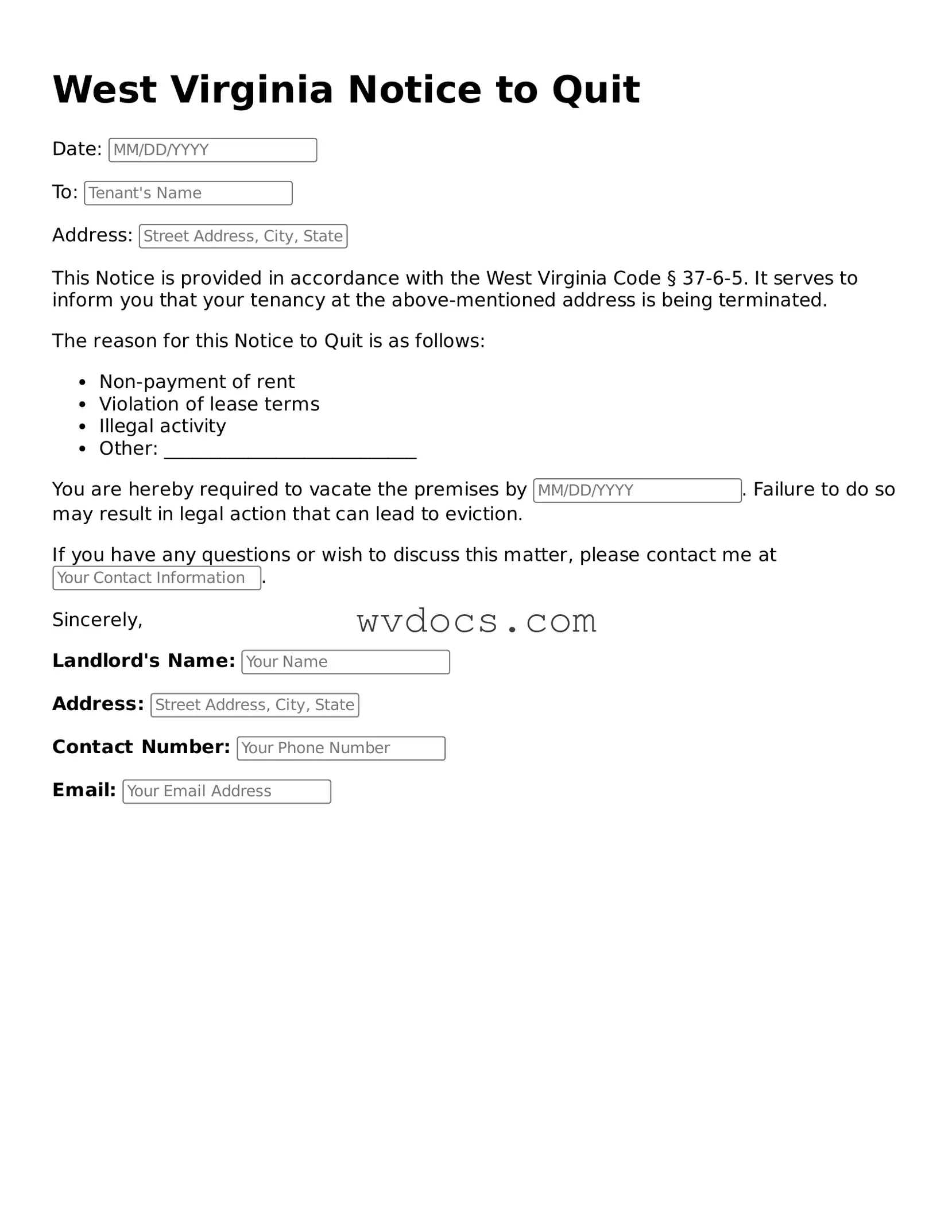The West Virginia Notice to Quit form is similar to the eviction notice used in many states. An eviction notice serves as a formal communication from a landlord to a tenant, indicating that the tenant must vacate the rental property. Like the Notice to Quit, it specifies the reason for the eviction, whether it be non-payment of rent or violation of lease terms. Both documents provide a timeline for the tenant to respond or vacate, ensuring clarity in the process of ending a tenancy.
Another document akin to the Notice to Quit is the 30-Day Notice to Terminate Tenancy. This notice is often used in month-to-month rental agreements. It informs the tenant that the landlord intends to terminate the tenancy, providing a full 30 days for the tenant to prepare for departure. Similar to the Notice to Quit, it requires clear communication and adherence to specific timelines, helping to prevent misunderstandings between parties.
The Lease Termination Letter is also comparable to the Notice to Quit. This letter is typically initiated by the tenant to notify the landlord of their intention to leave the rental property. Like the Notice to Quit, it outlines the reasons for leaving and includes a proposed move-out date. This document emphasizes the need for mutual respect and understanding in the landlord-tenant relationship.
The Demand for Rent is another related document. It is issued by a landlord when a tenant fails to pay rent on time. This demand formally requests payment and often serves as a precursor to a Notice to Quit. Both documents aim to communicate urgency and the necessity for action, ensuring that tenants are aware of their obligations and the potential consequences of non-compliance.
In situations where parents are unable to oversee their child's welfare, having a Power of Attorney for a Child form in place can offer significant peace of mind, ensuring that a designated guardian has the authority to make necessary decisions on behalf of the child.
A Notice of Lease Violation shares similarities with the Notice to Quit as well. This document is issued when a tenant breaches specific terms of their lease agreement. It outlines the violation and provides a timeframe for the tenant to remedy the situation. Like the Notice to Quit, it serves as a formal notice that can lead to further action if the issue is not resolved.
The Cure or Quit Notice is another document that resembles the Notice to Quit. This notice is sent to a tenant who has violated a lease term, allowing them an opportunity to correct the issue within a specified timeframe. Both documents highlight the importance of clear communication and provide a structured approach to resolving disputes between landlords and tenants.
The Rent Increase Notice is also relevant. While it does not directly ask a tenant to vacate, it informs them of a change in rental terms. It serves as a formal communication that can lead to a tenant's decision to leave if the new terms are unacceptable. Like the Notice to Quit, it must be delivered within a specific timeframe to comply with state laws.
Lastly, the Notice of Intent to Vacate is similar to the Notice to Quit in that it serves as a formal notification regarding the end of a tenancy. This document is typically submitted by the tenant to the landlord, indicating their intention to leave the property. Both documents underscore the importance of clear, timely communication to ensure a smooth transition for all parties involved.
